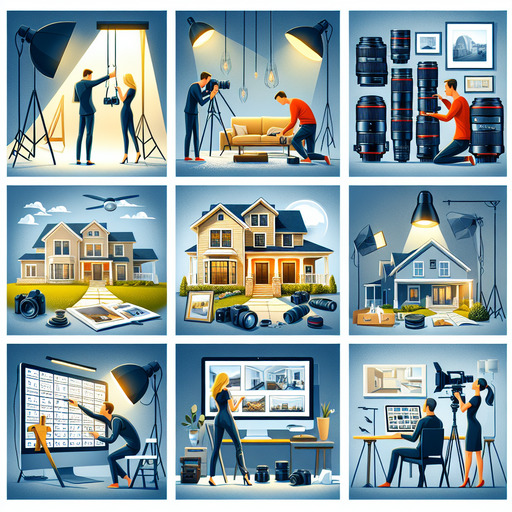
-
Table of Contents
- Mastering Real Estate Photography: Tips, Techniques, and Tools
- Understanding the Importance of Real Estate Photography
- Essential Real Estate Photography Tips
- 1. Mastering the Art of Lighting
- 2. Choosing the Right Equipment
- 3. Perfecting Your Composition
- Enhancing Photos with Real Estate Photography Editing
- Real Estate Photography Pricing: What to Consider
- Conclusion
- Questions and Answers
Mastering Real Estate Photography: Tips, Techniques, and Tools
In the competitive world of real estate, first impressions are everything. High-quality real estate photography can make or break a property listing, influencing potential buyers’ decisions before they even step foot inside. This guide will explore essential tips, techniques, and tools to elevate your real estate photography game, ensuring your listings stand out in the crowded market.
Understanding the Importance of Real Estate Photography
Real estate photography is more than just snapping pictures of a property. It’s about capturing the essence and potential of a space, enticing buyers to envision themselves living there. According to the National Association of Realtors, 87% of home buyers found photos to be the most useful feature of online listings. This statistic underscores the critical role photography plays in real estate marketing.
Essential Real Estate Photography Tips
1. Mastering the Art of Lighting
Lighting can make or break a photograph. Natural light is your best friend in real estate photography. Aim to shoot during the golden hours—early morning or late afternoon—when the light is soft and warm.
- Open all curtains and blinds to let in as much natural light as possible.
- Use additional lighting equipment, like softboxes, to fill in shadows.
- Avoid shooting directly into the sun to prevent harsh shadows and glare.
2. Choosing the Right Equipment
Investing in quality real estate photography equipment can significantly enhance your photos. A DSLR or mirrorless camera with a wide-angle lens is ideal for capturing spacious interiors.
- Consider a tripod for stability and consistent framing.
- Use a drone for aerial shots to showcase the property’s surroundings.
- Experiment with different lenses to capture unique perspectives.
3. Perfecting Your Composition
Composition is key to creating visually appealing real estate photos. Use the rule of thirds to balance your images and draw the viewer’s eye to important features.
- Ensure vertical lines are straight to avoid distorted images.
- Highlight the property’s best features, such as a fireplace or large windows.
- Declutter spaces to create a clean, inviting look.
Enhancing Photos with Real Estate Photography Editing
Post-processing is an essential step in real estate photography. Editing can enhance colors, correct lighting issues, and remove unwanted elements from your photos.
- Use software like Adobe Lightroom or Photoshop for professional results.
- Adjust brightness, contrast, and saturation to make images pop.
- Consider virtual staging to help buyers visualize the space.
Real Estate Photography Pricing: What to Consider
Pricing your real estate photography services can be challenging. Consider factors such as the size of the property, the number of photos required, and any additional services like drone photography or virtual tours.
- Research competitors’ pricing to ensure your rates are competitive.
- Offer package deals to provide value to clients.
- Be transparent about pricing to build trust with clients.
Conclusion
Real estate photography is a powerful tool in the property market. By mastering lighting, composition, and editing, and choosing the right equipment, you can create stunning images that captivate potential buyers. Remember, the goal is to make each property shine and stand out in a competitive market.
For more insights into real estate photography, check out this Wikipedia page on real estate photography.
Questions and Answers
Q1: What is the best time of day to take real estate photos?
A1: The best time to take real estate photos is during the golden hours—early morning or late afternoon—when the light is soft and warm, providing a natural and inviting look to the property.
Q2: How can I make small rooms look bigger in photos?
A2: Use a wide-angle lens to capture more of the room, and ensure the space is well-lit. Decluttering and using mirrors can also help create the illusion of a larger space.
Q3: Why is post-processing important in real estate photography?
A3: Post-processing enhances the quality of your photos by adjusting lighting, colors, and removing unwanted elements, ensuring the property looks its best and appeals to potential buyers.
If you’re interested in learning more about our real estate photography services or have any questions, please contact us.